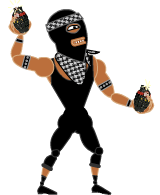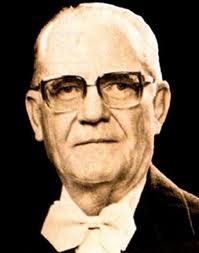Architect of Afghan Air Operations Takes the A-29 Super Tucano for a Ride
PR Newswire
SPARKS, Nev., July 23, 2012
A-29 Super Tucano Makes U.S. Debut at Oshkosh Air Show
SPARKS, Nev., July 23, 2012 /PRNewswire/ -- When retired fighter pilot and Air
Force Deputy Chief of Staff for Intelligence, Surveillance and Reconnaissance
(ISR), Lt. Gen. David Deptula was offered the opportunity to take the A-29
Super Tucano for a test-flight, he jumped at the chance. The aircraft is a
contender, offered by Sierra Nevada Corporation in partnership with Embraer,
in the U.S. Air Force (USAF) Light Air Support (LAS) competition. The plane
is on display this week at the Oshkosh air show.
The A-29 Super Tucano has gained prominence in the international defense
market in recent years due to its capabilities and track record in difficult
environments, as well as its low cost of operation and ownership. In the
Latin American countries that were the first to adopt this aircraft (Brazil,
Chile, Colombia, Dominican Republic and Ecuador), political leaders credit it
with toppling illegal organizations and controlling a variety of other
threats. Since the beginning of 2012, Burkina Faso, Angola and Mauritania
each have signed contracts to purchase Super Tucano aircraft and Indonesia
placed an order for another batch of eight aircraft and a flight simulator,
having already purchased eight Super Tucanos. Embraer, the plane's
manufacturer, recently announced an agreement with Boeing to provide weapons
integration for the A-29 Super Tucano, further enhancing its capabilities.
The aircraft selected by the USAF for its Light Air Support program initially
will be used to provide light attack, armed reconnaissance and training
capabilities to the Afghanistan military. It will also provide the U.S. and
other partner nations with critical capabilities for agile, flexible,
economical, new generation multi-role airpower.
"Given that now, more than ever, the United States and its allies need to find
cost-effective, innovative ways to successfully defeat a variety of
non-traditional threats, I wanted to see for myself whether the Super Tucano
deserves the superb reputation it already possesses," General Deptula said.
Deptula served in the U.S. Air Force for more than 34 years. Among his many
accomplishments, he served as Director of the Combined Air Operations Center
for Operation Enduring Freedom in 2001, where he orchestrated air operations
over Afghanistan resulting in removal of the Taliban regime and eliminating
the al-Qaeda terrorist training camps. He also was the principal attack
planner for the Desert Storm coalition air campaign in 1991. Deptula was the
first Deputy Chief of Staff for Intelligence, Surveillance and Reconnaissance,
Headquarters Air Force, where he was responsible for policy formulation,
planning, and leadership of AF ISR and remotely piloted aircraft. He has
piloted more than 3,000 flying hours (400 in combat) that include multiple
operational fighter command assignments in the F-15. As a civilian, Deptula is
focused on helping the defense industry provide better, cheaper and faster
solutions to global security problems.
The A-29 Super Tucano is a relatively small, sleek, and powerful turboprop
aircraft designed for multiple combat and ISR roles. Its airpower agility and
value proposition is a result of years of advances in technology, design
innovation, and demonstrated capability.
According to Deptula, there is no question that the A-29 Super Tucano was
designed for maximum effectiveness in austere operations. "One of the things
you notice immediately is the very wide track and high ground clearance of the
Super T. Wide, sturdy gear, and low pressure tires mean superior 'off road'
and crosswind performance." He also noted that the plane is intended to make
the most of its 1600 SHP Pratt & Whitney PT6 engine. "The long fuselage and
large vertical stabilizer are well designed to compensate for the torque of
the powerful motor – and add ready growth space for future missions." The
engine also overcomes the challenge of high, hot environments, and enables a
sustained airspeed throughout high-G maneuvers.
Deptula also noted that the structure, frame, engine mounts, canopy, and the
nine stores stations that support over 130 certified configurations (including
a Bright Star II sensor by FLIR Corp.) are "purposely over-engineered." The
wings and fuselage are blended for both strength and improved aerodynamics.
Twin .50 cal machine guns are integrated into the wings saving weight and
drag while improving accuracy. This, in-turn, improves station-time and adds
critical persistence when operating in conjunction with ground forces.
The On Board Oxygen Generation System (OBOGS), "0-0" Martin Baker ejection
seats, cockpit armor, and "wonderful visibility" from both cockpit seats,
provide great confidence and comfort for those who fly the A-29, according to
Deptula.
"The A-29 flies like a 'fighter' should. It's responsive, yet forgiving;
rugged, yet advanced. If it weren't for the prop out front, I would have
thought I was flying a jet," Deptula said.
The mission planning and debrief system, Honeywell and Collins avionics,
configurable multi-function displays and HOTAS (hands-on-throttle-and-stick)
are modeled after the USAF's modern fighters. According to Deptula, this
design minimizes transition and training time and makes weapons employment
intuitive and user-friendly. "These are important characteristics of an
aircraft with which you are trying to get people up to speed fast," he said.
"I could have flown an actual mission after my short demo. Here's the landing
checklist: Gear down. Flaps down. It doesn't get much simpler than that."
Video of General Deptula's Super Tucano flight is available at:
http://www.builtforthemission.com/presskit.php
About Sierra Nevada Corporation: Sierra Nevada Corporation (SNC) is one of
America's fastest growing private companies based on its significant expansion
and reputation for rapid, innovative, and agile technology solutions in
electronics, aerospace, avionics, space, propulsion, micro-satellite,
aircraft, communications systems and solar energy. Under the leadership of CEO
Fatih Ozmen and President Eren Ozmen, SNC employs over 2,100 people in 31
locations in 16 states. SNC's six unique business areas are dedicated to
providing leading-edge solutions to SNC's dynamic customer base.
SNC is also the Top Woman-Owned Federal Contractor in the United States. Over
the last 30 years under the Ozmen's leadership, SNC has remained focused on
providing its customers the very best in diversified technologies to meet
their needs and has a strong and proven track record of success. The company
continues to focus its growth on the commercial sector through internal
advancements and outside acquisitions, including the emerging markets of
renewable energy, telemedicine, nanotechnology, cyber and net-centric
operations. For more information on SNC visit
http://www.sncorp.com.
Gen. Deptula serves as a member of the advisory board of the Sierra Nevada
Corporation. His military bio is available at:
http://www.af.mil/information/bios/bio.asp?bioID=5213.
![Cool 8-]](./images/smilies/icon_cool.gif)













